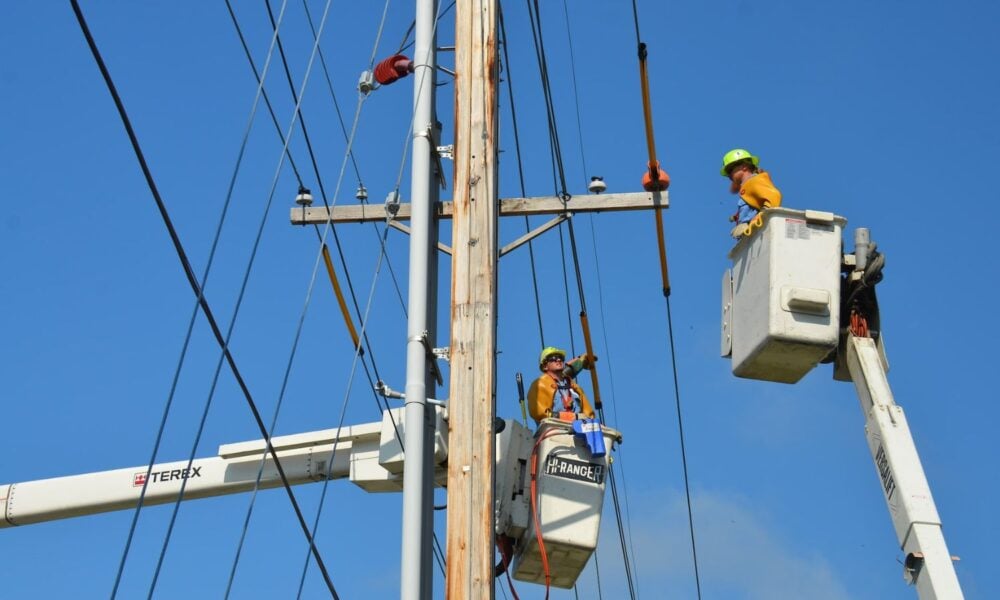Illinois utilities Ameren and Commonwealth Edison (ComEd) are preparing distribution grid plans for the first time under new requirements established by the Climate and Equitable Jobs Act (CEJA), which the Illinois Legislature passed in September 2021. An ambitious law that promises to accelerate the state’s clean energy transition, CEJA provides a detailed framework for greater utility transparency and accountability to update electricity distribution infrastructure to ensure a clean energy future.
Distribution grids have always played a critical role, providing the power commercial and residential customers need, day in and day out. But the distribution system will be even more important when making a rapid clean energy transition, particularly considering the role distributed energy resources, such as rooftop solar, battery storage and electric vehicles, can play in helping Illinoisans dump fossil fuels. Utilities will have to connect these resources to the distribution grid with additional transparency and oversight.
Given the exponential growth of utility distribution grid investments, regulators and stakeholders also will require an open distribution grid planning process. The most recent data from the US Energy Information Administration shows that major US utilities invested nearly $60 billion in 2019, an increase of 6 percent from 2018 and 64 percent from 2000.
Illinois utilities contributed to that trend. According to the Illinois Commerce Commission (ICC), Ameren’s distribution grid expenditures nearly doubled between 2012 and 2020, jumping from $456 million to $857 million. Over the same period, ComEd grid investments went from $1.3 billion to $2.2 billion.
Utilities must submit their plans by January 2023 and will have to provide details about how they will invest in the distribution grid infrastructure for the next five years. The ICC will review the plans and issue a decision by end of 2023. Thanks to the CEJA law, however, there are now opportunities for stakeholder involvement in utility distribution grid decisions.
Starting with stakeholders
Indeed, CEJA spelled out a distribution grid planning process that starts with stakeholders, which include utilities, community organizations and businesses. As a result, the ICC held 15 workshops from December 2021 through to May 2022 for stakeholders to share their perspectives and discuss the distribution grid’s role in accommodating clean, distributed energy resources. They also reviewed cost-benefit analyses and debated how they should be used when determining the best investments.
Consensus was not the goal, but the ICC facilitator report indicated there was mutual agreement on the need for transparency and public education about the grid planning process, as well as on the importance of continued stakeholder collaboration.
Utilities have a clear to-do list
Following the series of workshops, the ICC asked Ameren and ComEd to submit their multi-year integrated distribution plans. Called an “initiating order,” the ICC request provided the utilities a to-do list that includes:
- Following the ICC-required process to develop the plan, including stakeholder engagement.
- Defining the distribution system’s operational characteristics, including detailed information about distributed energy resources, such as type (solar, wind, storage), size and location.
- Providing information about outage frequency and duration.
- Providing investment information from the previous five years and estimates for the following five years. The utilities must include information about their investments to connect distributed energy resources, as well as about any charges they made developers and customers pay to connect distributed energy to the grid.
During the workshops, stakeholders made recommendations for what the ICC should add to its list of requirements in its initiating orders. The Environmental Law and Policy Center, for example, asked the commission to incorporate requirements based on its experience in Colorado and Minnesota, which include asking utilities to address such issues as affordability, grid innovation, pilot projects, and the use of state policy and high-growth scenarios in forecasts for distributed energy resource adoption.
To enable additional opportunities for collaboration and stakeholder input, Ameren and ComEd have been hosting meetings to discuss relevant issues, including distributed energy resources and how the grid can best accommodate new technologies.
The two utilities must now prepare their plans to meet heightened expectations for reliability, resilience and affordability, and enable a clean energy future. I expect them to consider the value clean distributed energy resources can bring to the grid and their Illinois customers. Another crucial aspect will be how their plans will meet CEJA’s requirement to deliver 40 percent of the benefits to environmental justice communities and neighborhoods where residents historically have been excluded from economic opportunities, defined by CEJA as equity investment eligible communities.
The Union of Concerned Scientists will be working with our coalition partners to ensure the utilities’ plans are ambitious and help advance Illinois’ clean energy transition.

